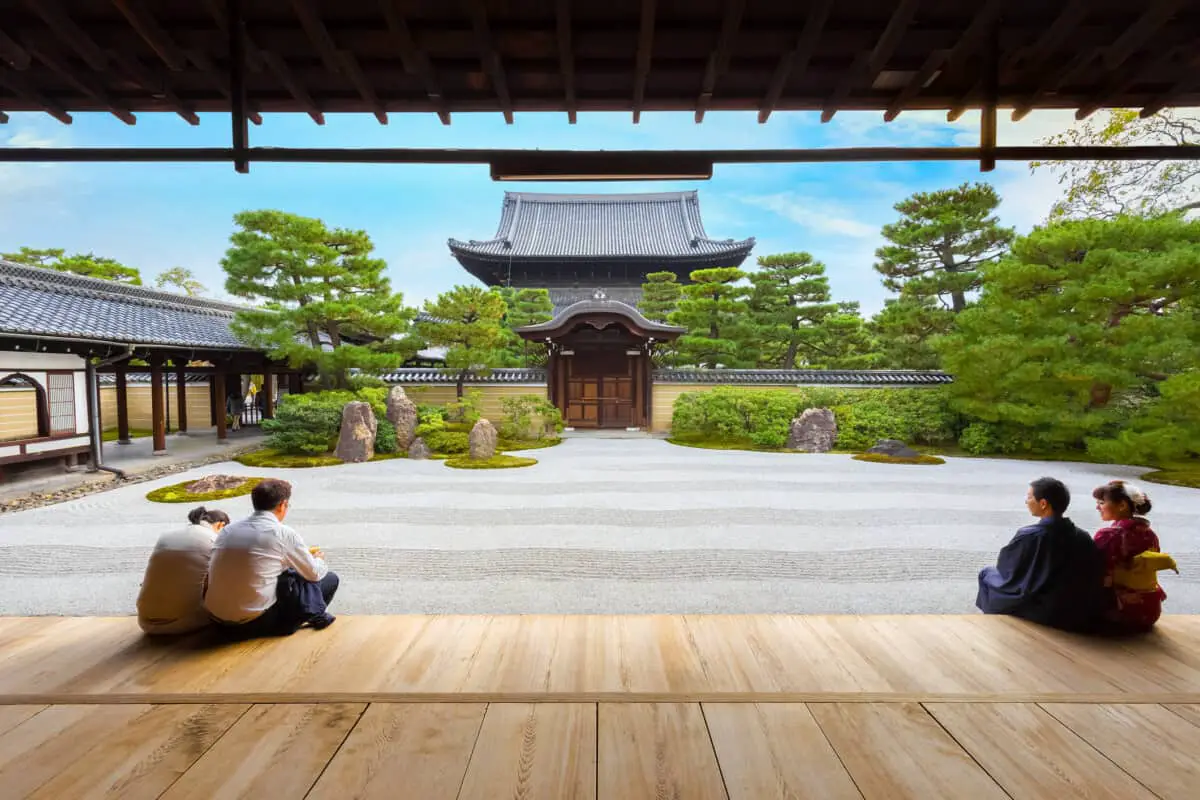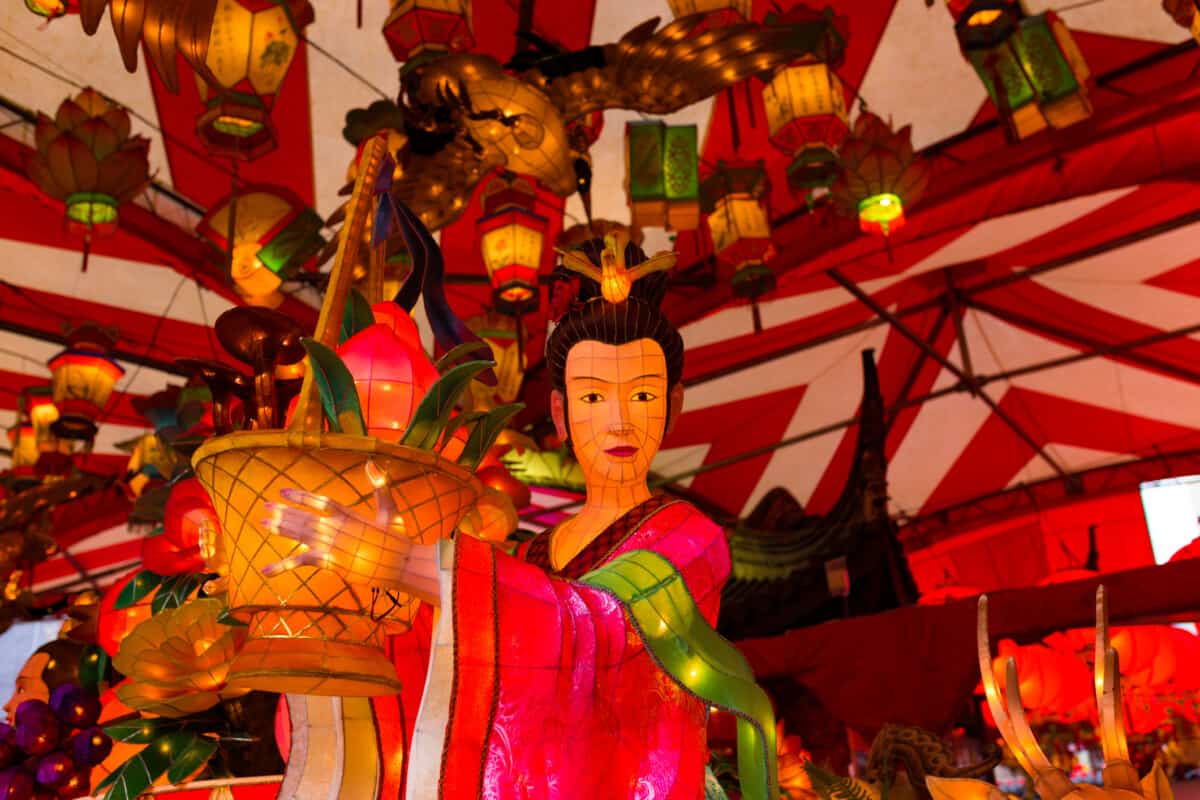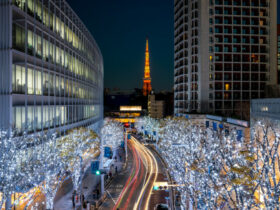Although you may think that they are the same thing, Japanese shrines and temples actually belong to different religions and hold significant importance in their respective religion.
If you are planning on heading to Japan then you may want to see some of the beautiful historic sights that the country had to offer. All around the country you will find that many of the places of interest are either “shrines” or temples”.
If you do not know any better you may think that they are synonyms for the same type of building. However, “shrines” and “temples” actually belong to different religions.
Shrines are a part of the Shinto religion, whereas temples have their origins in India and China are more closely related to Buddhism.
Before visiting a temple or a shrine it is important that you know which you are visiting and understand the difference so that you can act in accordance with the rituals and behavior appropriate for that religion if you choose to participate.
So, what are the differences?
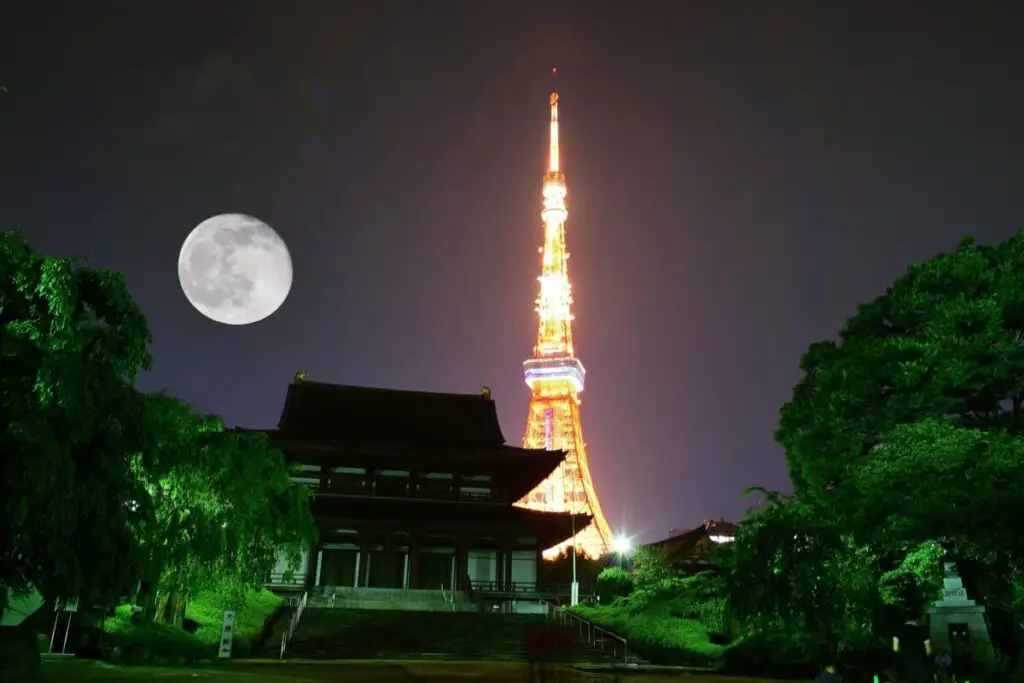
What are the differences between Shintoism and Buddhism?
Shintoism and Buddhism are the two main religions in Japan and that hold a significant place in people’s daily lives. The importance of religion in Japan is evident through the vast number of holidays and festivals devoted to the religion.
Shintoism, also referred to as the “way of the gods”, is the biggest religion in Japan with over 90 million followers (Japan has a population of 126 million people).
The religion is polytheistic and divides gods into categories, such as for the sun, thunder, wind etc. The Shinto religion is based on historic Japanese mythology.
On the other hand, Buddhism has its roots in Korea and China and came to Japan in the 6th century. The history of Buddhism in Japanese history has been turbulent but today it is the second most followed religion in the country.
How do I recognize a shrine?
In Japanese a shrine is called a “Taisha” or “Jinja”. In most cases the word “Taisha” or “Jinja” will be in the name, such as with the famous, and widely-visited Meiji Jingu in Tokyo.
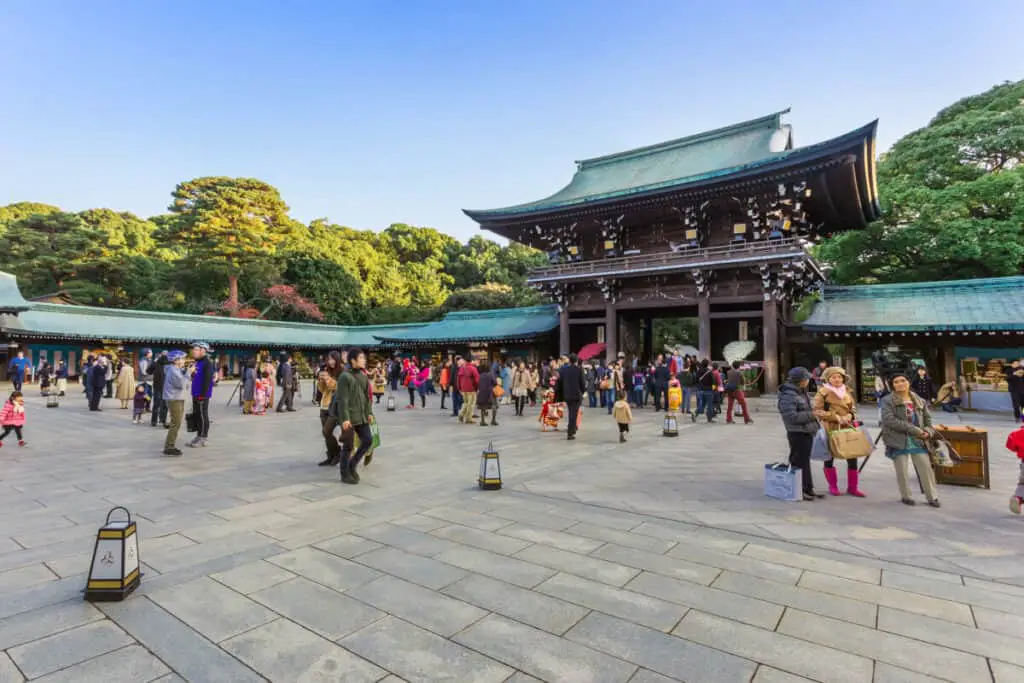
Torii gates
One of the most recognizable elements of a shrine, for anyone, will be the Torii gate at the entrance. This symbol is recognizable all over the world and is commonly associated with Japan. However, the Torii gate is actually a structure relating to Shintoism.
The Torii gates are very easy to spot as they are typically painted bright red (vermillion) and once you cross under them you have passed the threshold and entered onto sacred land.
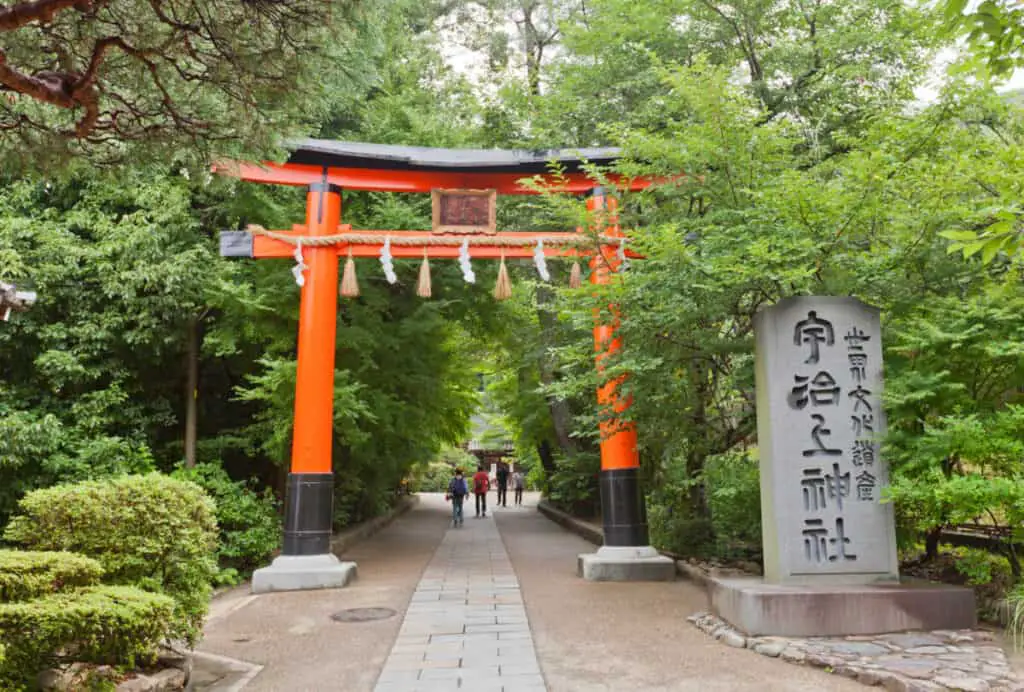
Haiden
As you walk along the main pathway (called “sando”) you will arrive at the Haiden, which is the place of offering at a shrine. This is also a place where people will come together to pray.
However, before you arrive at the Haiden there are a number of things that will indicate that you are at a shrine and not a temple. For example, the decorations hanging around the grounds will be indicative of a shrine.
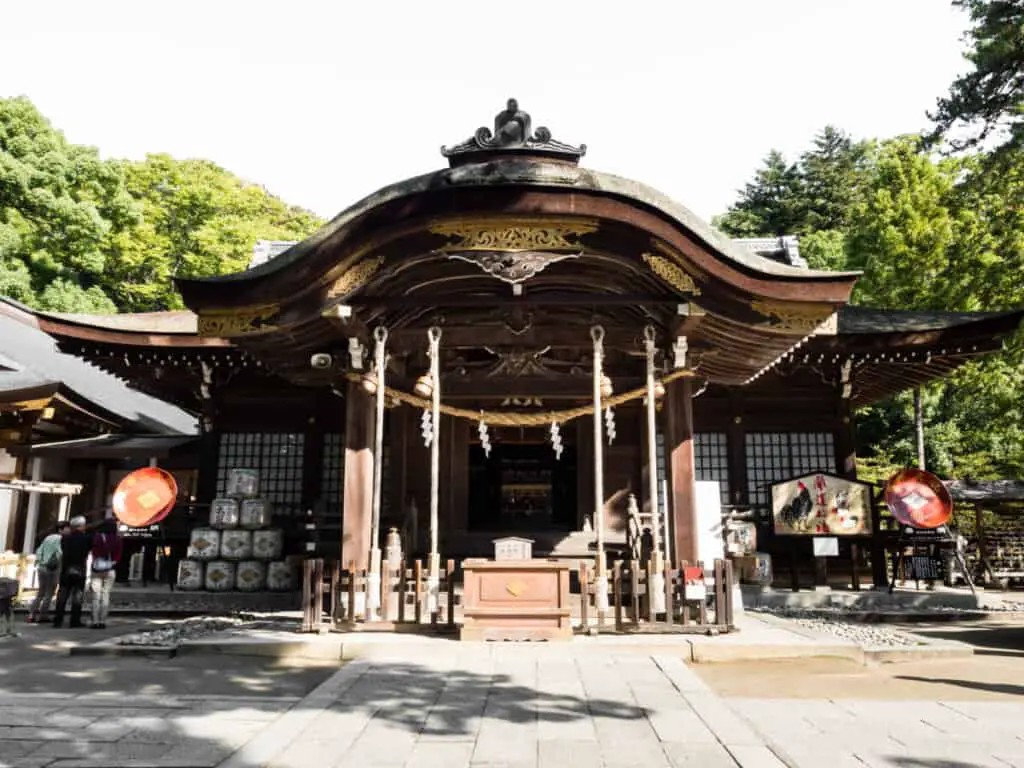
One such decoration is braided ropes that have small pieces of paper dangling from them. These decorative ropes can usually be found around the Torii gate or even the Haiden itself.
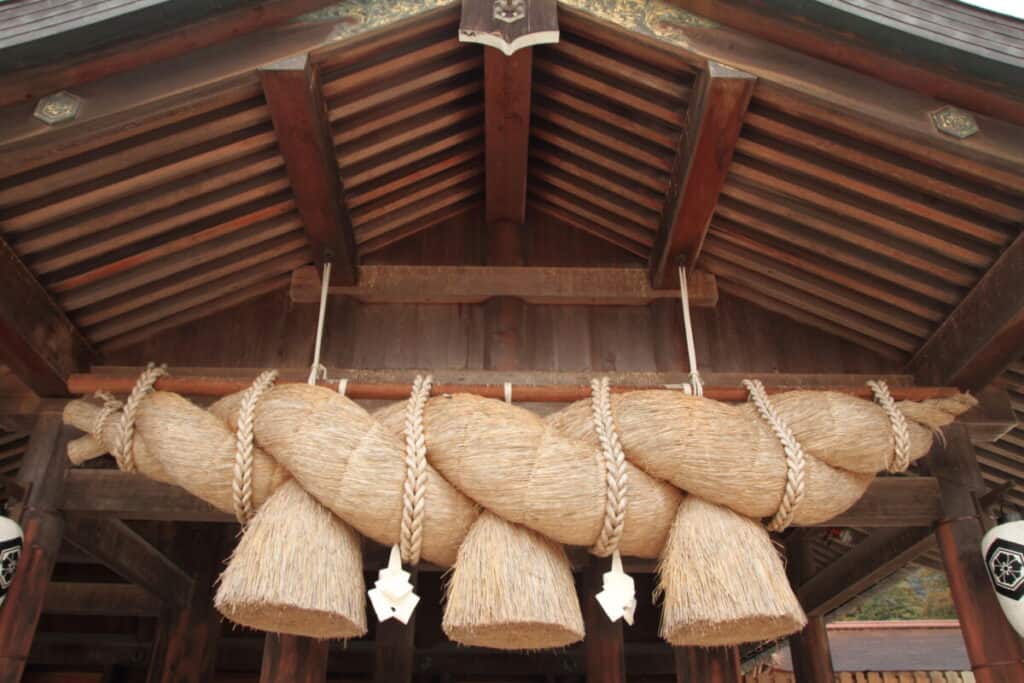
This decoration is called “shimenawa” and is made from rice straw. The significance of the shimenawa is to be the link between the physical world (the mortal world) and the higher world.
The pieces of paper hanging from the shimenawa are called “shide”. The purpose of the paper is to ward off evil spirits.
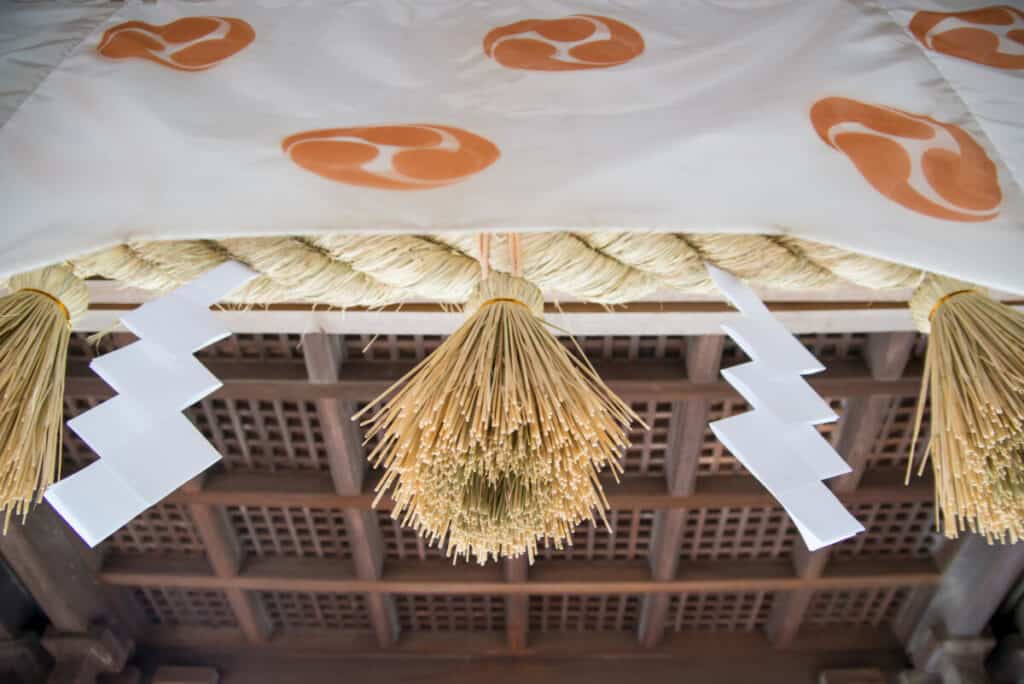
Lion-dog guards
“Komainu” are similar to lion-dogs and are found around the shrine grounds, but usually placed around the entrance or near the Haiden. The statues are always placed in pairs.
The purpose of these lion-dog statues is to protect the shrine grounds from evil spirits and to guard the shrine.
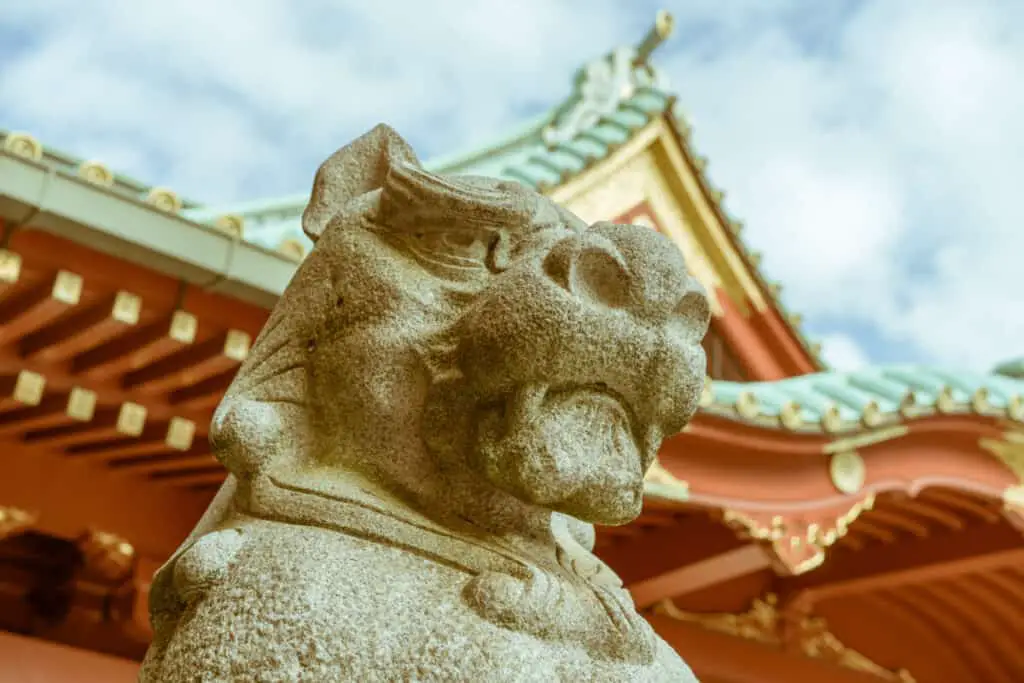
With the pair you will find that one has its mouth open and the other has its mouth closed. This is where you can see the influence of Buddhism in Shintoism.
The lion-dog statue with its mouth open is supposed to be pronouncing the sound “a” which is the first letter in the Sanskrit alphabet (the religion language of Buddhism and Hinduism).
The lion-dog statue with its mouth closed is supposed to be pronouncing the sound “um” which is the last letter of the Sanskrit alphabet.
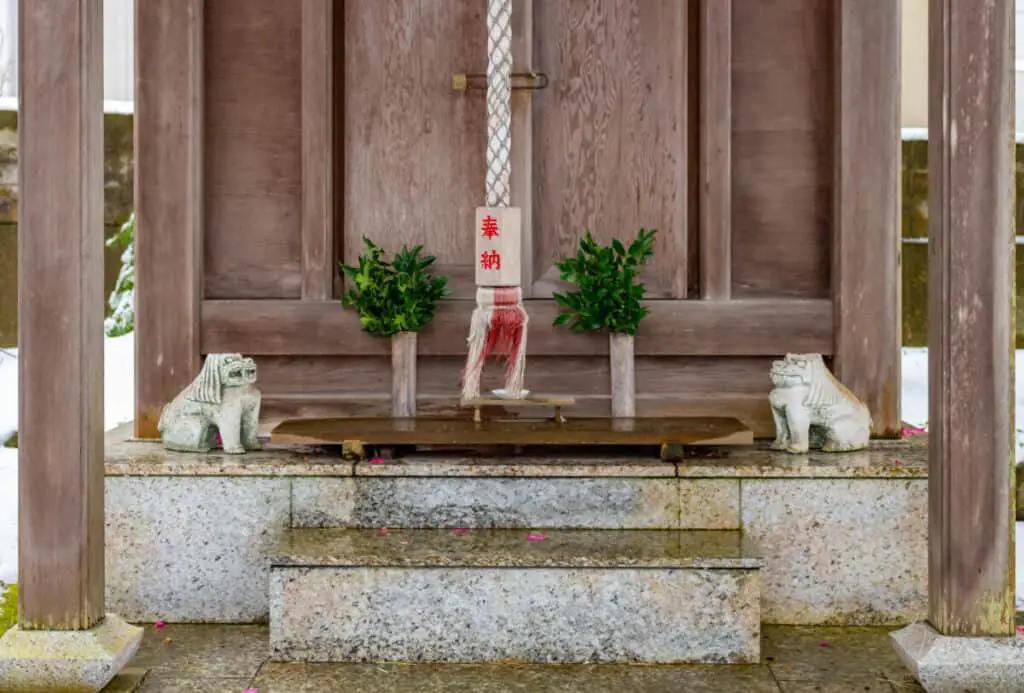
When you put these two sounds together you get the word “aum” which is a sacred Buddhist symbol. The significance behind the open and closed mouth is to symbolize the beginning and end of all things.
The priests
Another easy way to tell if you are in a shrine or a temple is to look at the priests who are maintaining it.
A Shinto priest (called a “kannushi” or “shinshoku”) will often wear a headpiece. This will differ from shrine to shrine, however, Buddhist monks do not wear a headdress of any kind.
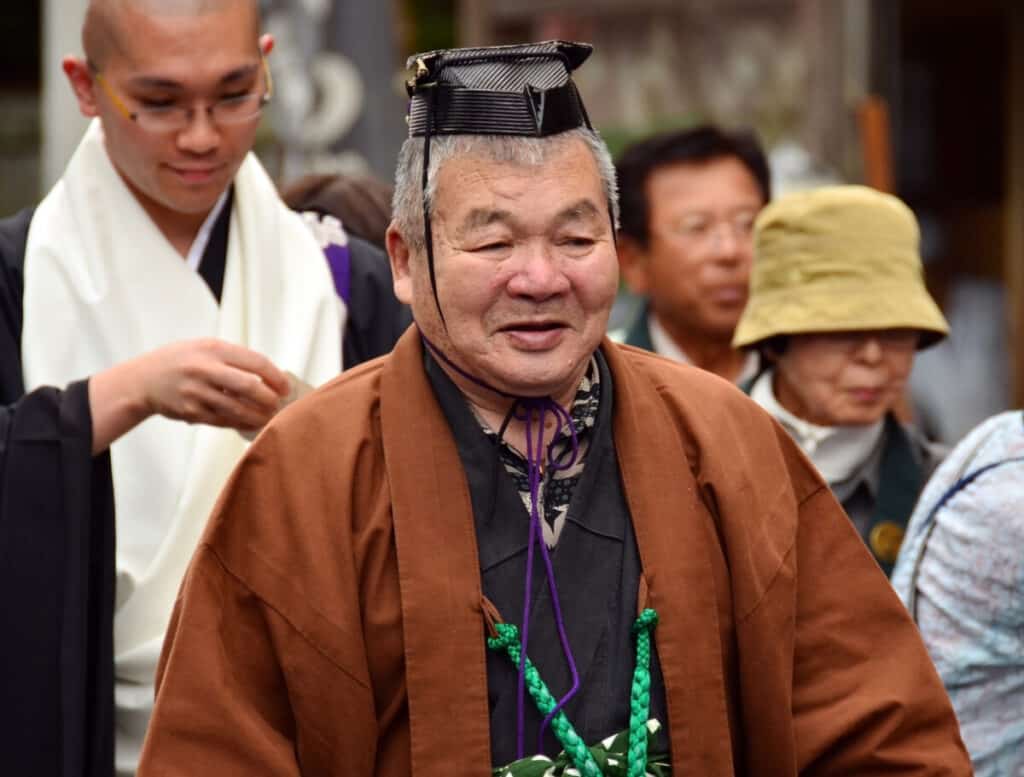
How do I recognize a temple?
Temples are called “tera” in Japanese and belong to the Buddhist tradition. As a mark of respect, the name is sometimes prefixed with “o”. Endings could also be one of two options: “ji” or “in” as with the temples Hozan-ji and Nano-in.
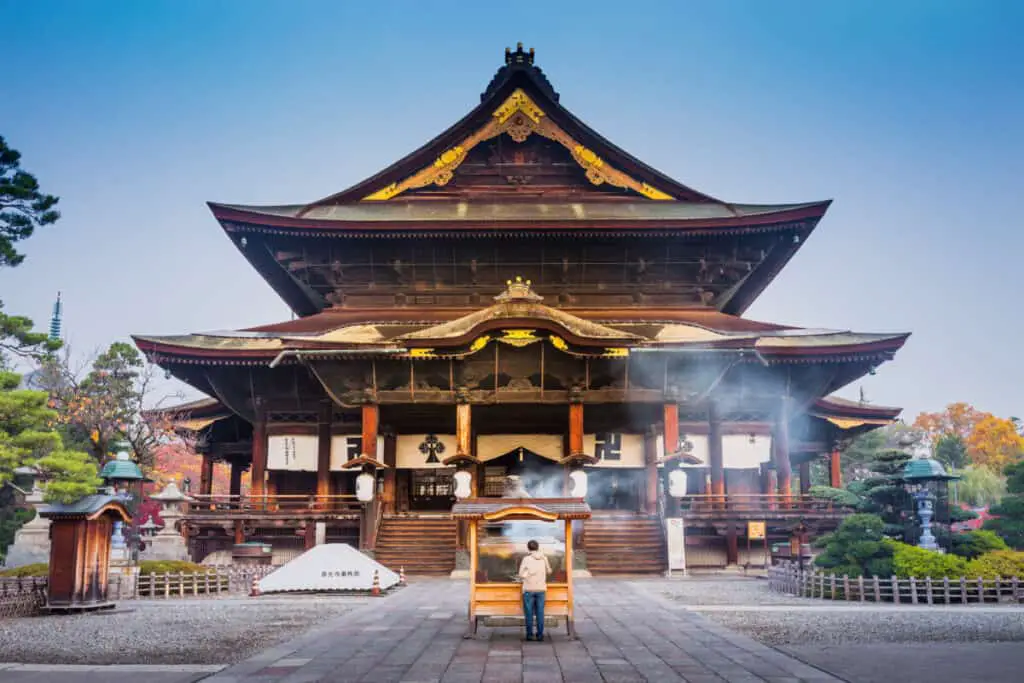
The main gates
The main gates are called Romon (the tower gate) and Somon (the main gate). Just like with the Torii gate in Shinto shrines, the Romon and Somon mark the threshold from the outside world onto the sacred temple grounds and are a sight to behold.
These can be much bigger and more elaborate than Torii gates, but many are also painted red. However, they can be any color and have different degrees of intricacy.
Some may have traditional Japanese sloping roofs whereas others may not. The exact design of the main gates will vary from temple to temple.
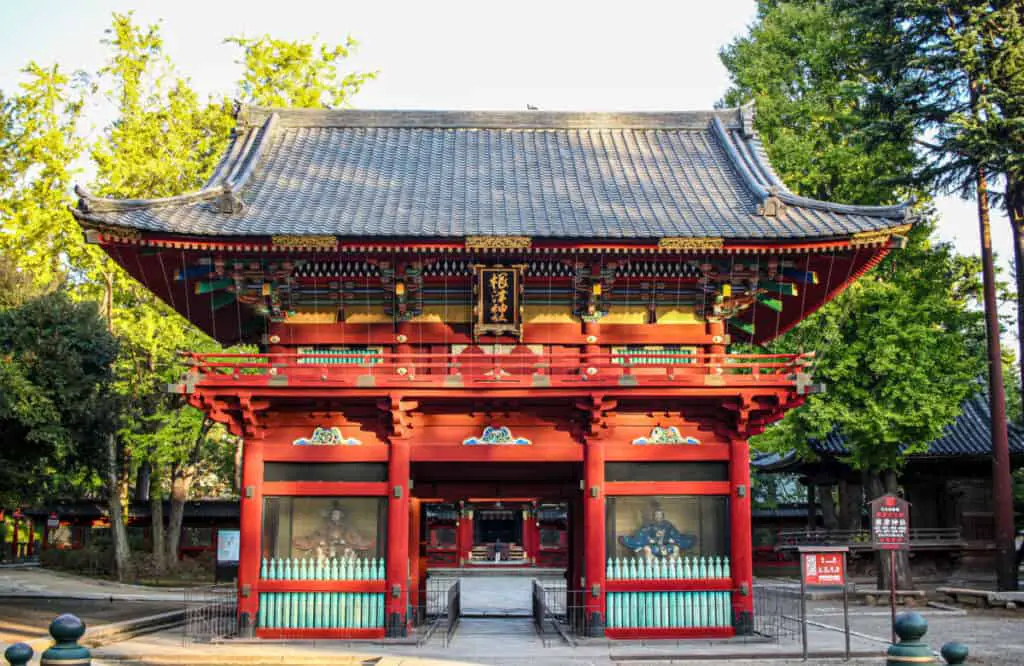
The temple bells
The temple bells, known as “bonsho” in Japanese, are easily noticeable from a distance as they are very large. The bells are used both to indicate the time and as a call to prayer. These large bells are ornately decorated and the decorations are usually very similar from one to another.
The temple bells are normally made from bronze and have turned very dark in color over the years of being exposed to the elements. Despite their dark color you cannot miss them due to their sheer size.
The bells are suspended but they are not rung using a clapper, but are actually hit from the outside in order to create their distinctive ringing sound.
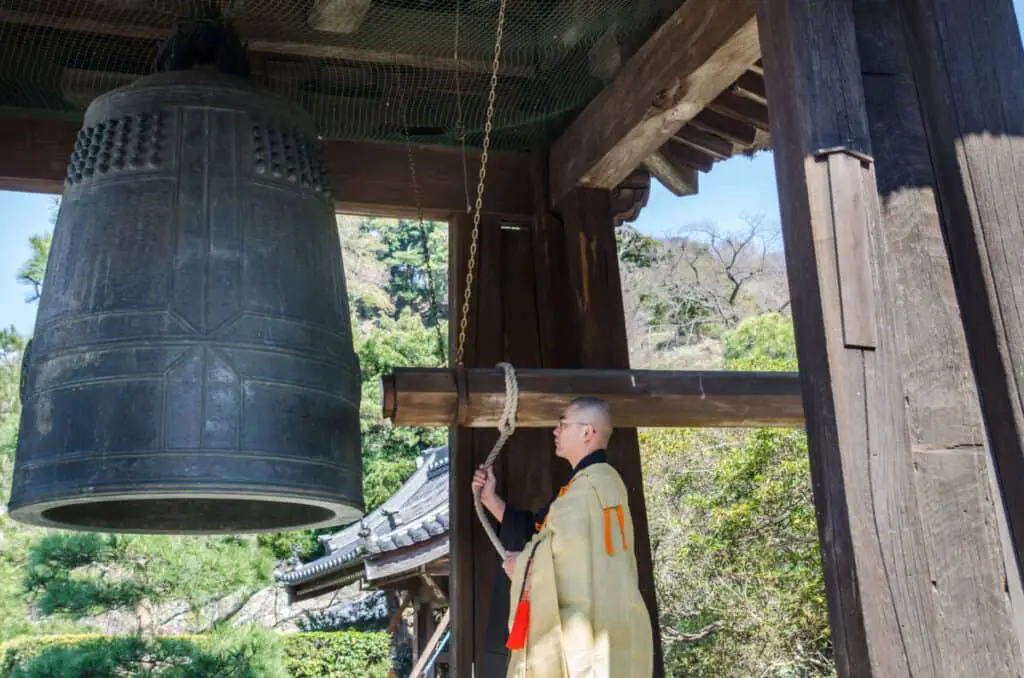
The Nio guardians
Much like the lion-dog guardians at a Shinto shrine, the Nio guardians are placed in pairs at the temple entrance in order to protect the grounds. They are also sometimes referred to as “kongo-rikishi”.
They are typically much larger and more striking than the lion-dog statues. They can also often have menacing gestures and facial expressions which aids their goals of protecting the temple grounds from unwanted, evil spirits.
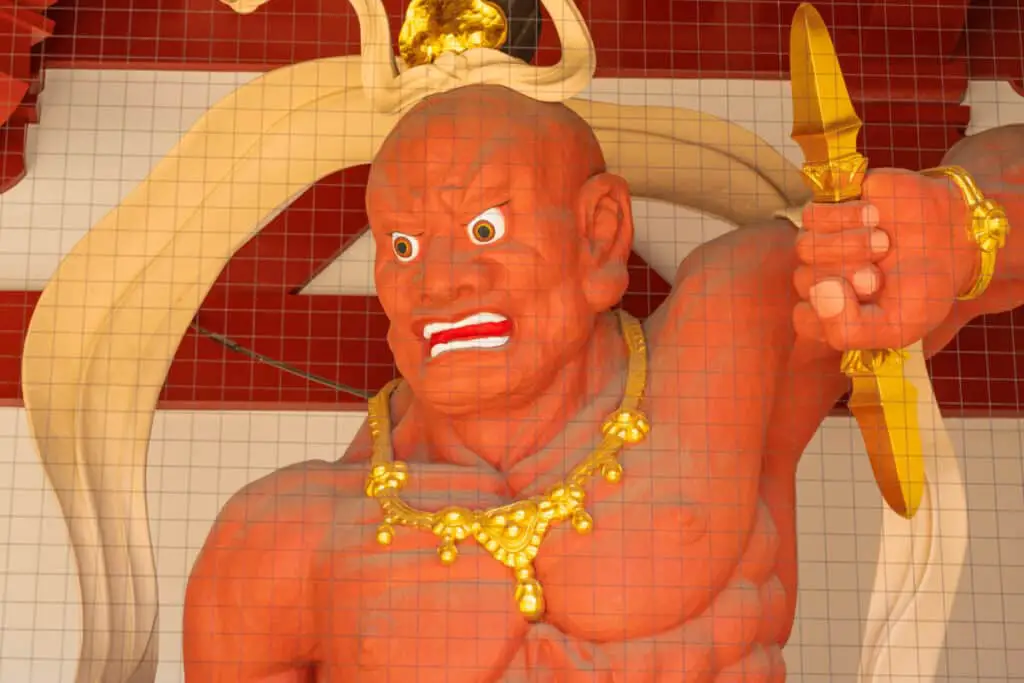
Buddhist statues
Perhaps the clearest giveaway that you are at a temple and not a shrine is a Buddhist statue. You will often see a number of different figures represented, but the most common are Amida nyorai, Kannon and Fudo-myoo.
Although these are the most common statues there are also a wide number of Buddhist deities that are commonly depicted in stone and displayed throughout temple grounds. Each of these statues creates an atmosphere that is unique to Buddhist temples.
As long as you can remember that shrines are Shinto and temples are Buddhist then this should give you a big clue as to where you are.
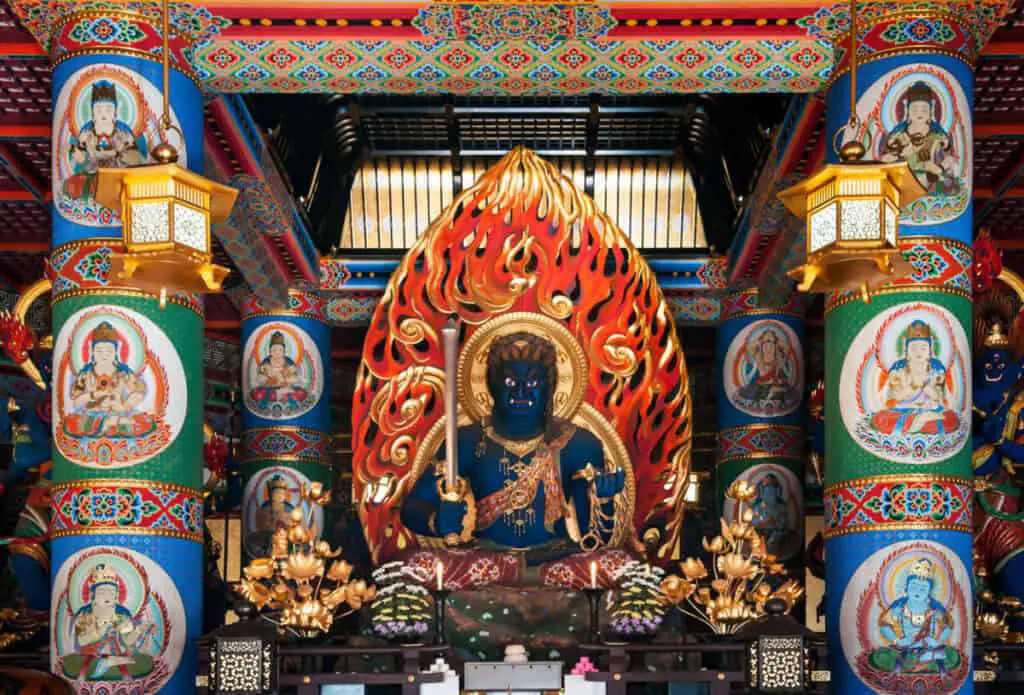
Why do people get confused between shrines and temples?
Although there are a number of clear distinctions between shrines and temples, many people, unfortunately, get confused between the two.
Perhaps one of the reasons for this is that although they are distinct, they do have a number of similar features such as large, red entrance gates and guardian statues.
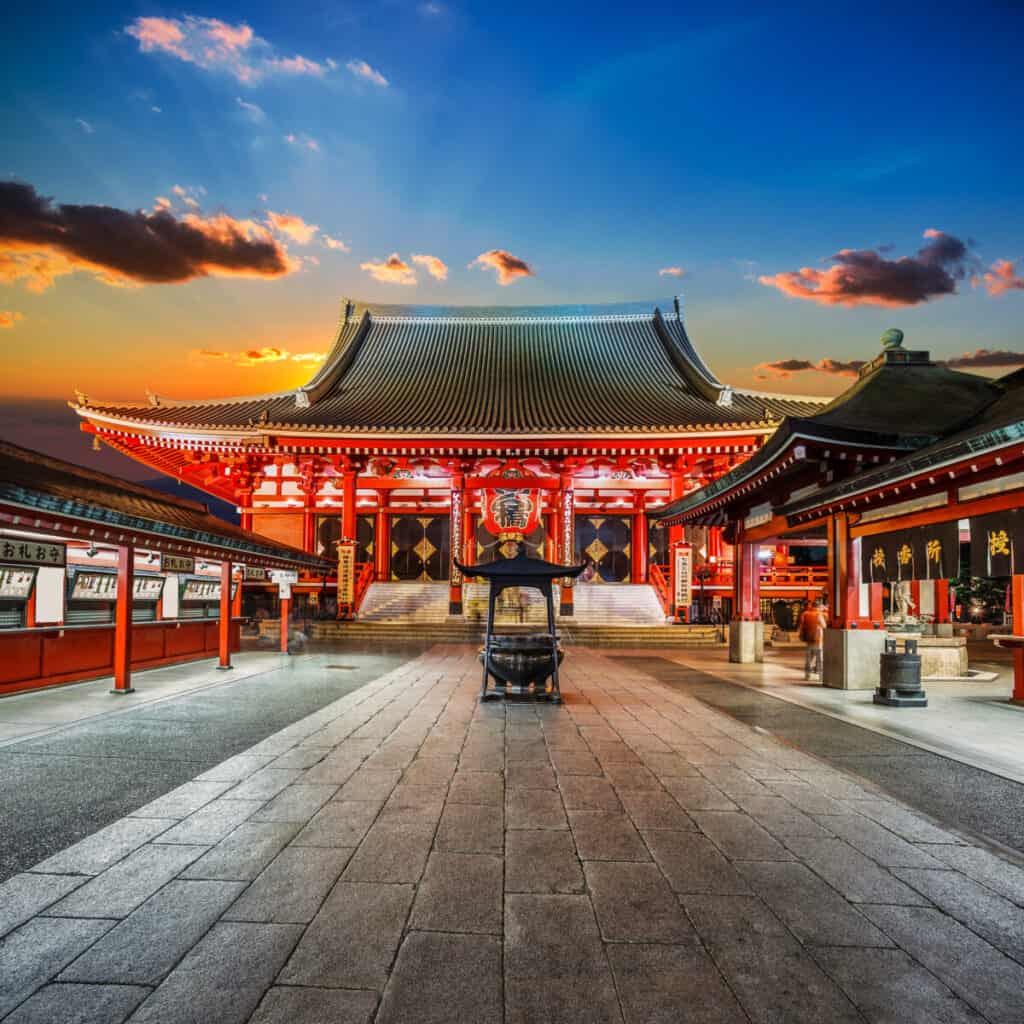
The overlapping of features comes from their complex history in Japan and their mixing over the centuries. In fact, the mix is called “syncretism”.
In fact, there are even “temple-shrines” which are places that fuse the two religions and take different parts of both cultural histories, perhaps making the distinction between the two even more confusing for those who are unfamiliar with the history, architecture, and belief systems of Shintoism and Buddhism.

